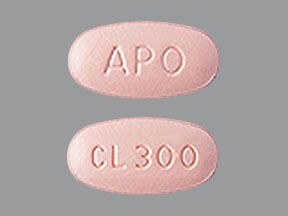
Clopidogrel Coupons & Savings Card – Discount Prices from $22.20
Generic for: Plavix
My prescription
Edit
300MG, Clopidogrel (2 Tablets)
Select pharmacy

CVS
$26.99
COUPON PRICE
Walgreens
$22.20
COUPON PRICE
Walmart
$25.83
COUPON PRICE
Albertsons
$26.75
COUPON PRICEFree Clopidogrel Savings Card

Walgreens
$22.20
Show this coupon to your pharmacist
ID
LH3481BA47
PCN
HT
BIN
011867
GRP
LABH001
This coupon is not insurance
More prescriptions for stroke risk reduction
More prescriptions for stroke risk reduction
Clopidogrel dosage forms
Dosage Quantity Price from Per unit 75MG 1 Tablet $2.56 $2.56 75MG 20 Tablets $3.79 $0.19 75MG 30 Tablets $4.44 $0.15 75MG 60 Tablets $6.37 $0.11 75MG 90 Tablets $14.81 $0.17 75MG 100 Tablets $15.45 $0.15 75MG 360 Tablets $32.76 $0.09 75MG 500 Tablets $38.50 $0.08 75MG 1000 Tablets $59.00 $0.06 75MG 1080 Tablets $62.28 $0.06
| Dosage | Quantity | Price from | Per unit |
|---|---|---|---|
| 75MG | 1 Tablet | $2.56 | $2.56 |
| 75MG | 20 Tablets | $3.79 | $0.19 |
| 75MG | 30 Tablets | $4.44 | $0.15 |
| 75MG | 60 Tablets | $6.37 | $0.11 |
| 75MG | 90 Tablets | $14.81 | $0.17 |
| 75MG | 100 Tablets | $15.45 | $0.15 |
| 75MG | 360 Tablets | $32.76 | $0.09 |
| 75MG | 500 Tablets | $38.50 | $0.08 |
| 75MG | 1000 Tablets | $59.00 | $0.06 |
| 75MG | 1080 Tablets | $62.28 | $0.06 |
| 75MG | 6000 Tablets | $264.00 | $0.04 |
| 300MG | 2 Tablets | $25.83 | $12.91 |
| 300MG | 1 Tablet | $10.42 | $10.42 |
| 300MG | 20 Tablets | $107.92 | $5.40 |
| 300MG | 30 Tablets | $152.88 | $5.10 |
| 300MG | 60 Tablets | $287.76 | $4.80 |
| 300MG | 90 Tablets | $422.64 | $4.70 |
| 300MG | 100 Tablets | $467.60 | $4.68 |
| 300MG | 120 Tablets | $557.52 | $4.65 |
| 300MG | 180 Tablets | $827.28 | $4.60 |
| 300MG | 240 Tablets | $1097.04 | $4.57 |
| 300MG | 500 Tablets | $2266.00 | $4.53 |
Clopidogrel Warnings
When considering the use of Clopidogrel (Plavix), it is crucial to be aware of several important safety warnings. Below are key points to ensure safe usage and to identify any potential risks:
Genetic Considerations: Some individuals with specific genetic traits may find Clopidogrel (Plavix) less effective due to how their bodies metabolize the drug. It is essential to consult your healthcare provider before introducing any new medications, vitamins, or supplements, as these can interfere with Clopidogrel's effectiveness. Particular medications such as omeprazole (Prilosec) or esomeprazole (Nexium) are known to reduce its efficacy.
Bleeding Risks: Clopidogrel (Plavix) increases the likelihood of bleeding, and it may result in prolonged bleeding times. You may experience easier bruising or excessive bleeding from minor injuries. The risk escalates if you are taking other medications that also enhance bleeding risk. Contact your healthcare provider immediately if you notice unusual bleeding, blood in your stool or urine, or if you feel unusually dizzy. Seek urgent medical attention following a fall, head injury, or other significant trauma, as there may be internal bleeding.
Discontinuation Warning: Do not discontinue Clopidogrel (Plavix) without your healthcare provider's guidance. Abrupt cessation can lead to heart attacks or strokes, especially if you have recently had a heart attack or have a stent. Always discuss any plans to stop the medication with your provider to ensure a safe transition.
Thrombotic Thrombocytopenic Purpura (TTP): This rare, but serious, blood condition can occur, particularly in the first two weeks of starting Clopidogrel (Plavix). Symptoms include fever, unusual bleeding, easy bruising, weakness, dizziness, fatigue, or breathing difficulties. Immediate medical attention is necessary if these symptoms arise.
Allergic Reactions: Allergic reactions, potentially severe, can occur with Clopidogrel (Plavix). If you experience a rash or hives, discontinue use and consult your doctor. Should you develop facial swelling, or symptoms of anaphylaxis such as swelling of the face, throat, or tongue, seek emergency medical help immediately. Be particularly cautious if you have a known allergy to prasugrel (Effient) or ticagrelor (Brilinta).
Contraindications: Do not use Clopidogrel (Plavix) if you have active bleeding. Discuss with your healthcare provider to evaluate your specific health conditions before starting this medication.
Please consult your healthcare provider for any further questions or clarifications regarding Clopidogrel (Plavix) to ensure safe and effective use.
Clopidogrel Side Effects
Clopidogrel Interactions
Interactions with high risk of serious adverse effects and should be avoided:
- Defibrotide
Interactions with moderate risk that may require dose adjustment, closer monitoring, or timing changes:
- Tipranavir
- Aspirin
- Omeprazole
- Esomeprazole
- Cimetidine
- Etravirine
- Felbamate
- Fluconazole
- Fluoxetine
- Fluvoxamine
- Ketoconazole
- Rifampin
- Voriconazole
- Repaglinide
- Tovorafenib
- Aceclofenac
- Amiodarone
- Apixaban
- Ibuprofen
- Naproxen
Interactions with low risk that usually do not require a change in therapy:
- Atorvastatin
- Phenytoin
- Ginkgo
